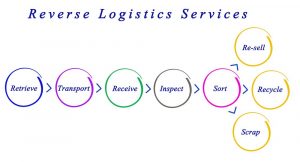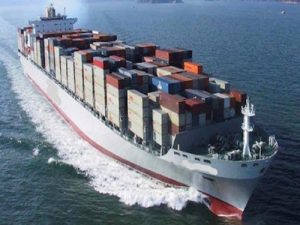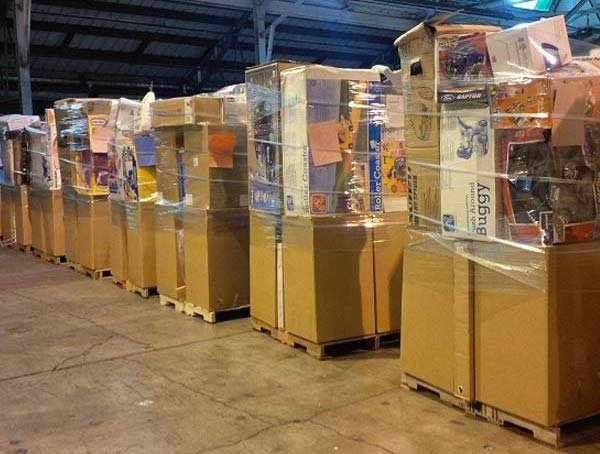During retail high season, from September through December, stores and ecommerce retailers optimize their logistical networks to meet high demand with a constant flow of goods. Once this season is over, demand sharply drops off, and post-holiday returns begin. Unwanted, damaged, spoiled, or otherwise un-valued merchandise wants to swim ‘back upstream’. This glut of returned merchandise represents a significant problem for retailers, but managing it strategically is also a significant opportunity to capture and protect value for your business and the environment. Learn why with Bank & Vogue.
Managing Retail Returns
Sending goods down your supply chain is a straightforward affair compared to sending them up.
Forward logistics is predictable, organized. Nicely packed boxes on nicely shrink-wrapped pallets, moving along the predefined routes to the predefined locations.
Reverse logistics is unpredictable and messy. Retailers must process returned items individually, sending each to a diverse number of possible end-destinations. Some goods find their way back into store inventory, while others are returned to the manufacturer, sent to other stores, refurbished, repackaged/re-kitted, liquidated, or simply thrown away.
 Processing returns, especially during the post-holiday season, comes at a tremendous expense to retailers. Managing 40-60% of the years returns in a three month period, instituting stricter criteria on return policies seems a valid strategy to reduce the pressure on reverse logistics networks, and the cost of their operation. However:
Processing returns, especially during the post-holiday season, comes at a tremendous expense to retailers. Managing 40-60% of the years returns in a three month period, instituting stricter criteria on return policies seems a valid strategy to reduce the pressure on reverse logistics networks, and the cost of their operation. However:
UPS tells us that 90% of online shoppers review return policies, 63% of which do so before purchasing.
A survey from Upstream Commerce demonstrates that when return shipping fees are charged, 81% of consumers are less likely to make a future purchase.
This article from CNBC presents an analysis, demonstrating how offering free returns increased purchases by 357% for two prominent online retailers!
These statistics demonstrate the cost of strict return policies. Stricter policies may reduce the cost of returns processing, but at the cost of front-end purchases.
To strike a balance between the competing interests of easy returns for consumers and cost-effective returns processing for businesses, too often retailers will are forced into lowering processing standards. In the event that the cost of refurbishing, reselling, and recycling returned goods is prohibitively high, the only option available is the landfill. This tactic is nobody’s first choice, but can mean the difference between profit and loss.
Bank and Vogue – An Alternative to Landfill
 The work of finding and connecting with new markets for old, used, and unwanted returned goods is not one that most businesses are capable of cost-effectively supporting. For this reason, thousands of tonnes of perfectly valuable products, and the resources that comprise them, find their way to landfills every year.
The work of finding and connecting with new markets for old, used, and unwanted returned goods is not one that most businesses are capable of cost-effectively supporting. For this reason, thousands of tonnes of perfectly valuable products, and the resources that comprise them, find their way to landfills every year.
Bank and Vogue exists to provide an alternative solution to retailers. Not only do we provide the means to divert tonnes and tonnes of your store returns from the landfill, but also the ability to capture value from products that otherwise would be earmarked as waste. We perform the work of finding and connecting with new markets so that your business doesn’t have to. Instead of landfilling store returns that cannot be cost-effectively resold, consider getting in touch with Bank and Vogue.







